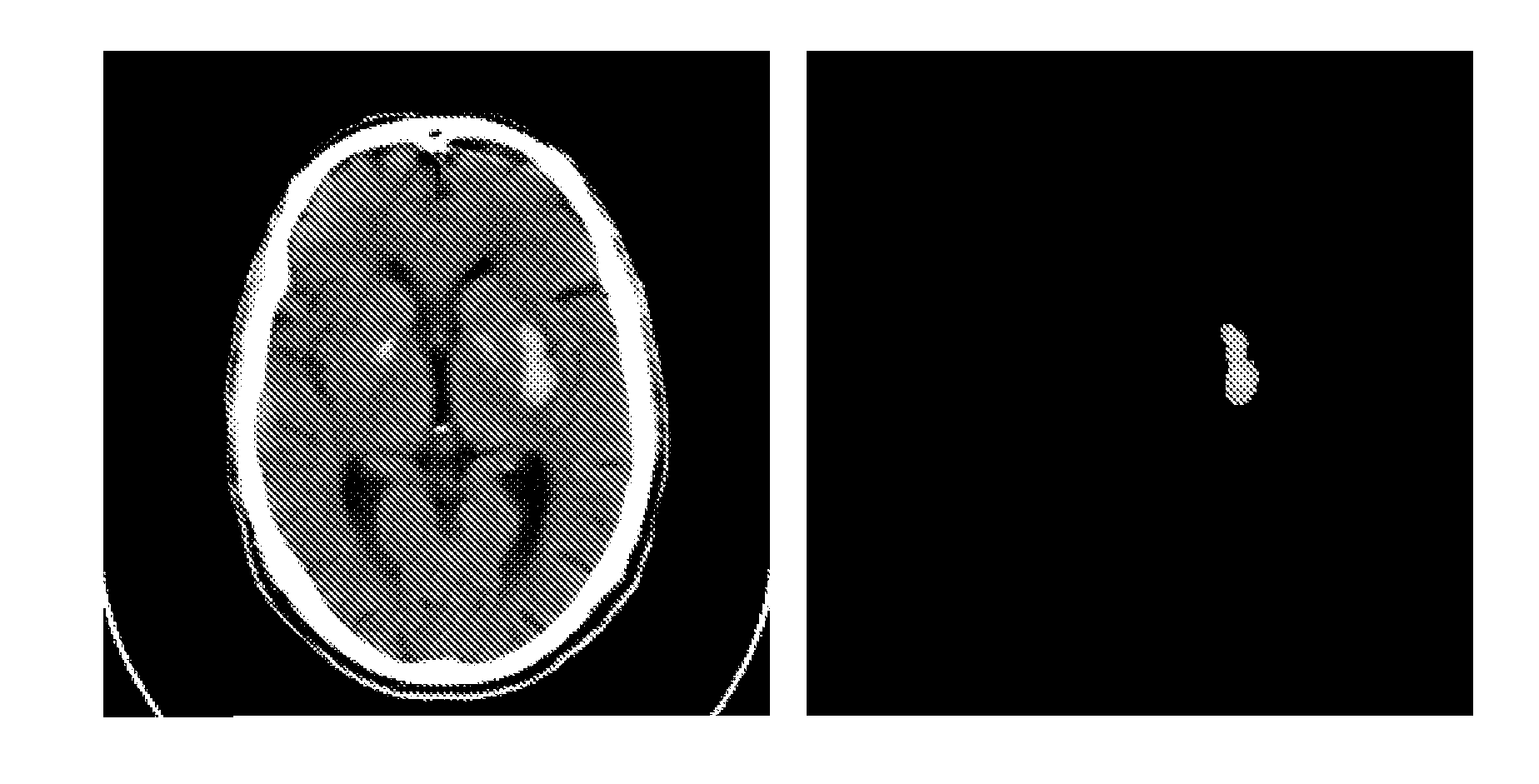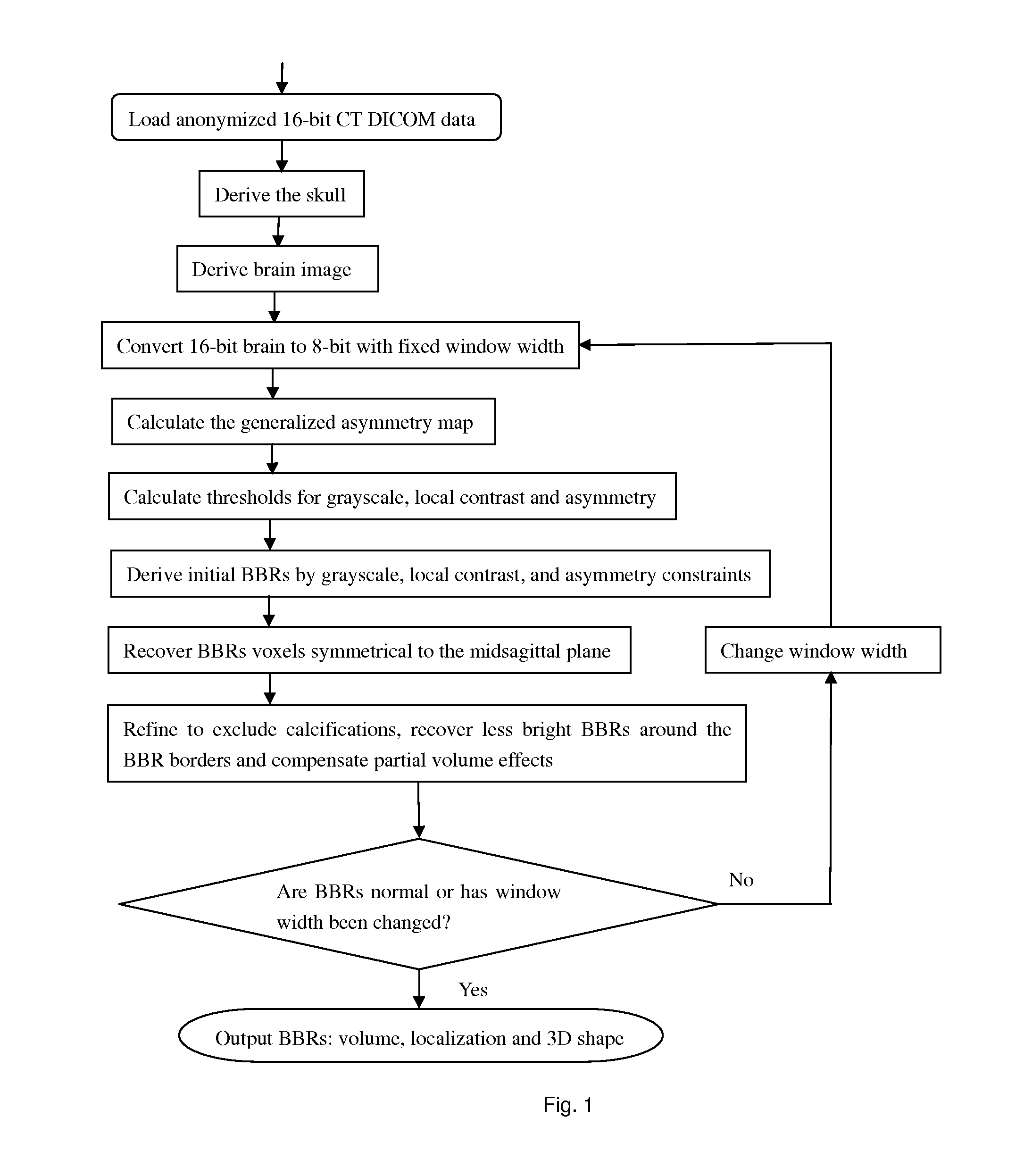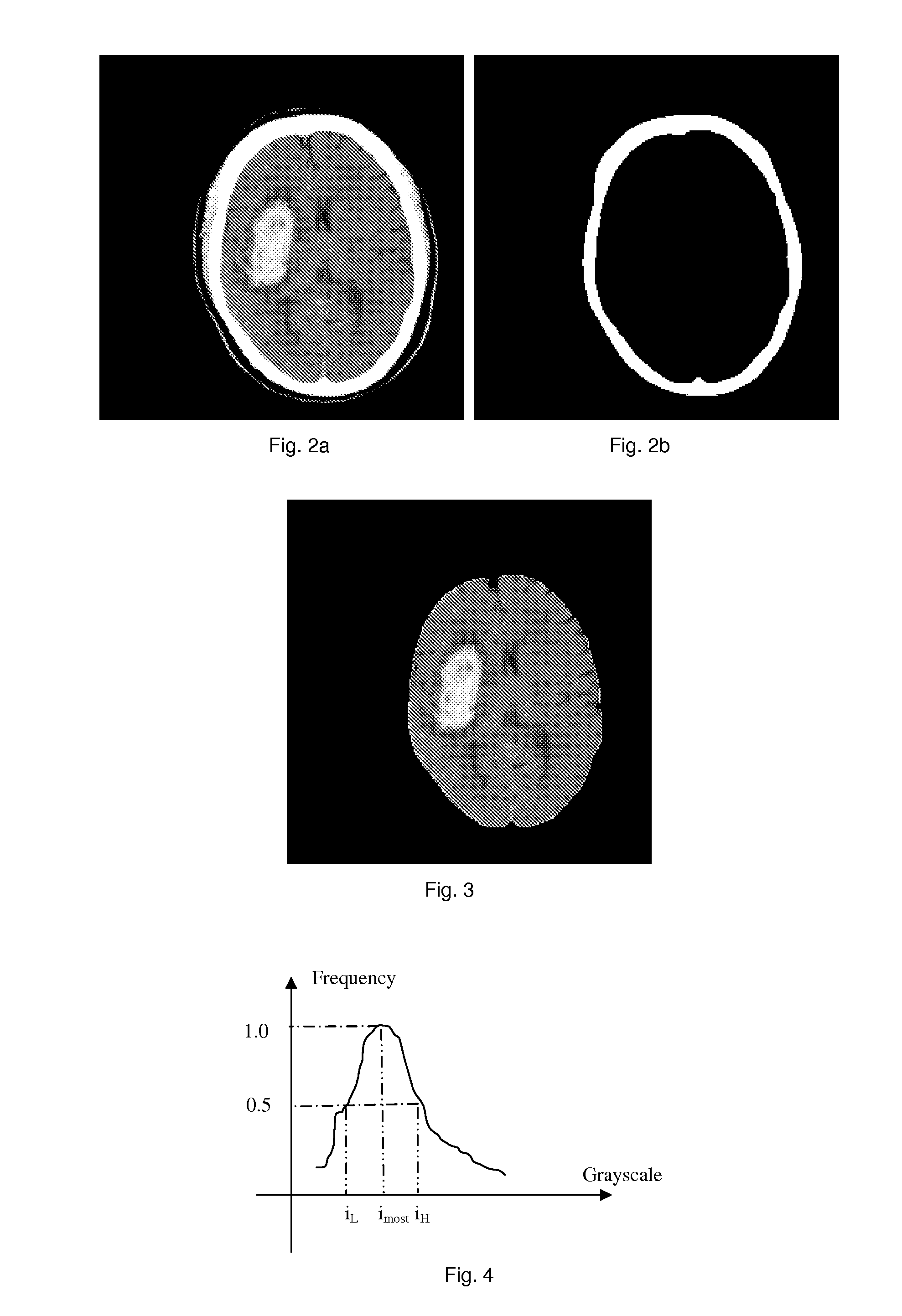Method and device for detecting bright brain regions from computed tomography images
a computed tomography and brain region technology, applied in image enhancement, instruments, applications, etc., can solve the problems of difficult diagnosis of ich from ct, morbidity, and ct-induced isch, and achieve the effects of increasing contrast, reducing morbidity, and increasing ct values
- Summary
- Abstract
- Description
- Claims
- Application Information
AI Technical Summary
Benefits of technology
Problems solved by technology
Method used
Image
Examples
Embodiment Construction
[0026]In describing example embodiments illustrated in the drawings, specific terminology is employed for the sake of clarity. However, the disclosure of this patent specification is not intended to be limited to the specific terminology so selected and it is to be understood that each specific element includes all technical equivalents that operate in a similar manner.
[0027]The method or device of the present invention takes anonymized DICOM (Digital Imaging and Communication in Medicine, 16-bits) CT images as input, removes the skull from the original 16-bit data, then converts the remaining images into 8-bit with default window width and window center. Subsequently, the average grayscale of the detected bright brain regions (BBRs) is checked to see if it falls within a reasonable range. If no, another round is iterated by changing the window width of the data conversion. The algorithm consists of: derivation of the skull; derivation of the brain to confine the locations of BBRs; ...
PUM
 Login to View More
Login to View More Abstract
Description
Claims
Application Information
 Login to View More
Login to View More - R&D
- Intellectual Property
- Life Sciences
- Materials
- Tech Scout
- Unparalleled Data Quality
- Higher Quality Content
- 60% Fewer Hallucinations
Browse by: Latest US Patents, China's latest patents, Technical Efficacy Thesaurus, Application Domain, Technology Topic, Popular Technical Reports.
© 2025 PatSnap. All rights reserved.Legal|Privacy policy|Modern Slavery Act Transparency Statement|Sitemap|About US| Contact US: help@patsnap.com



